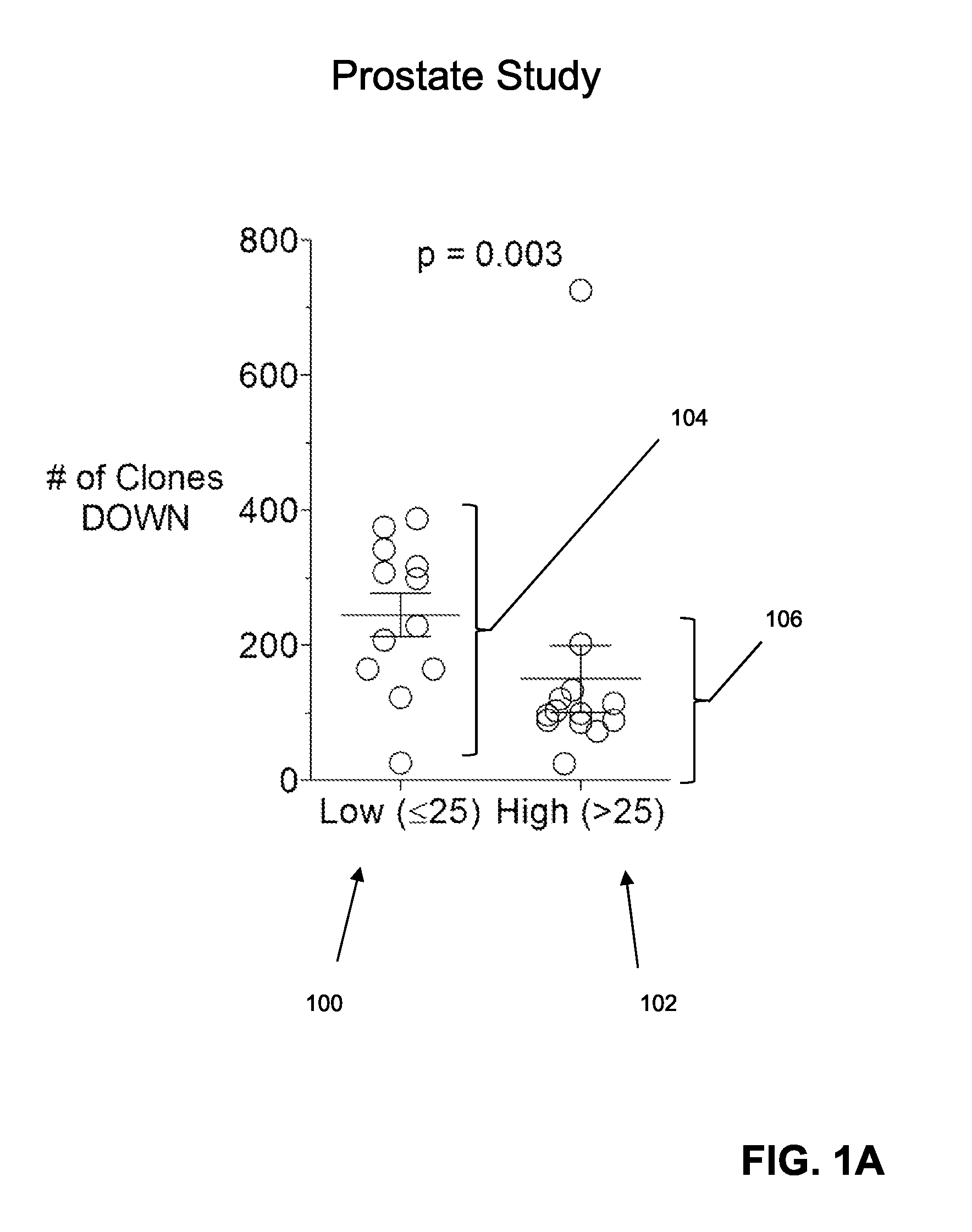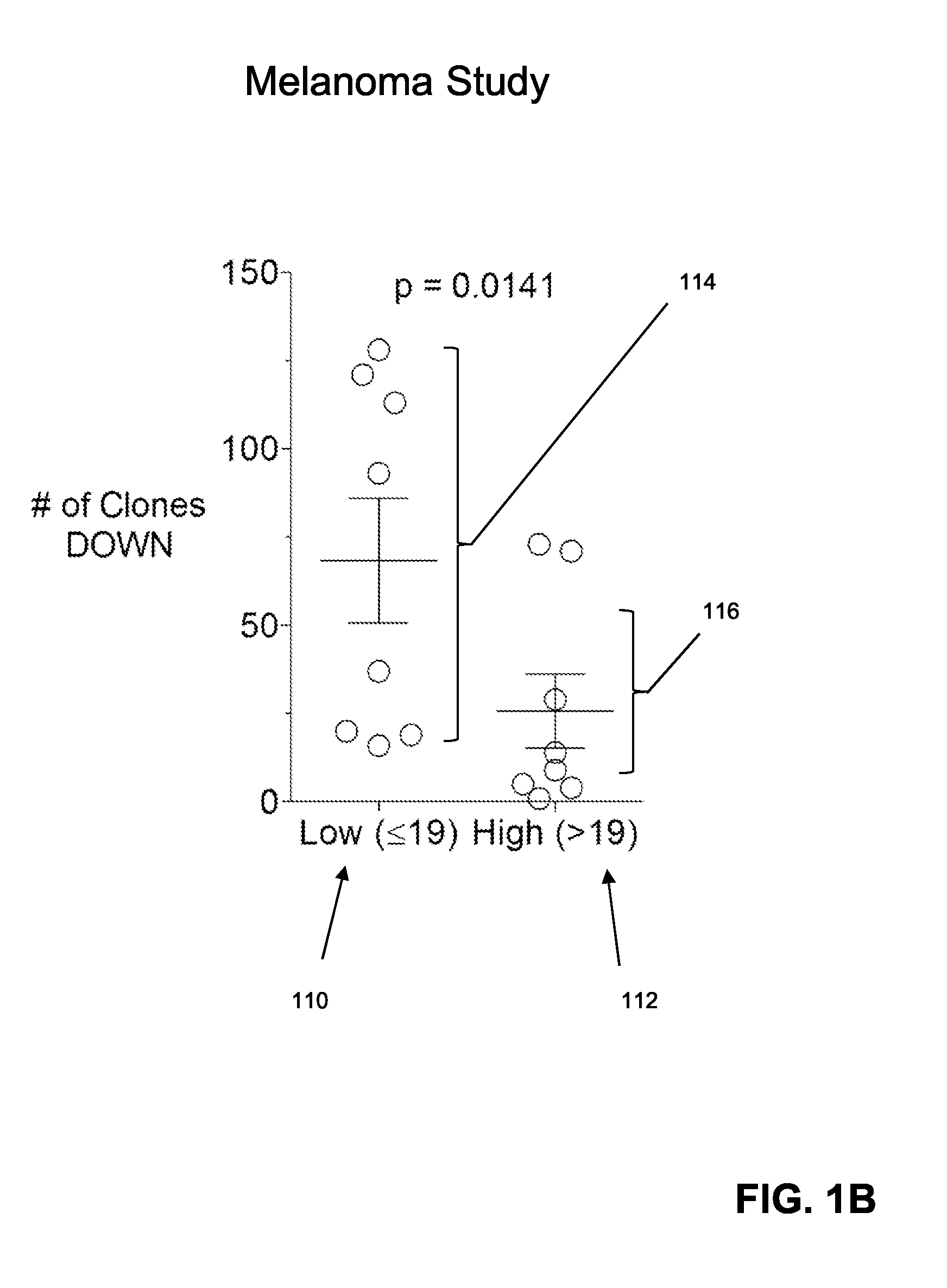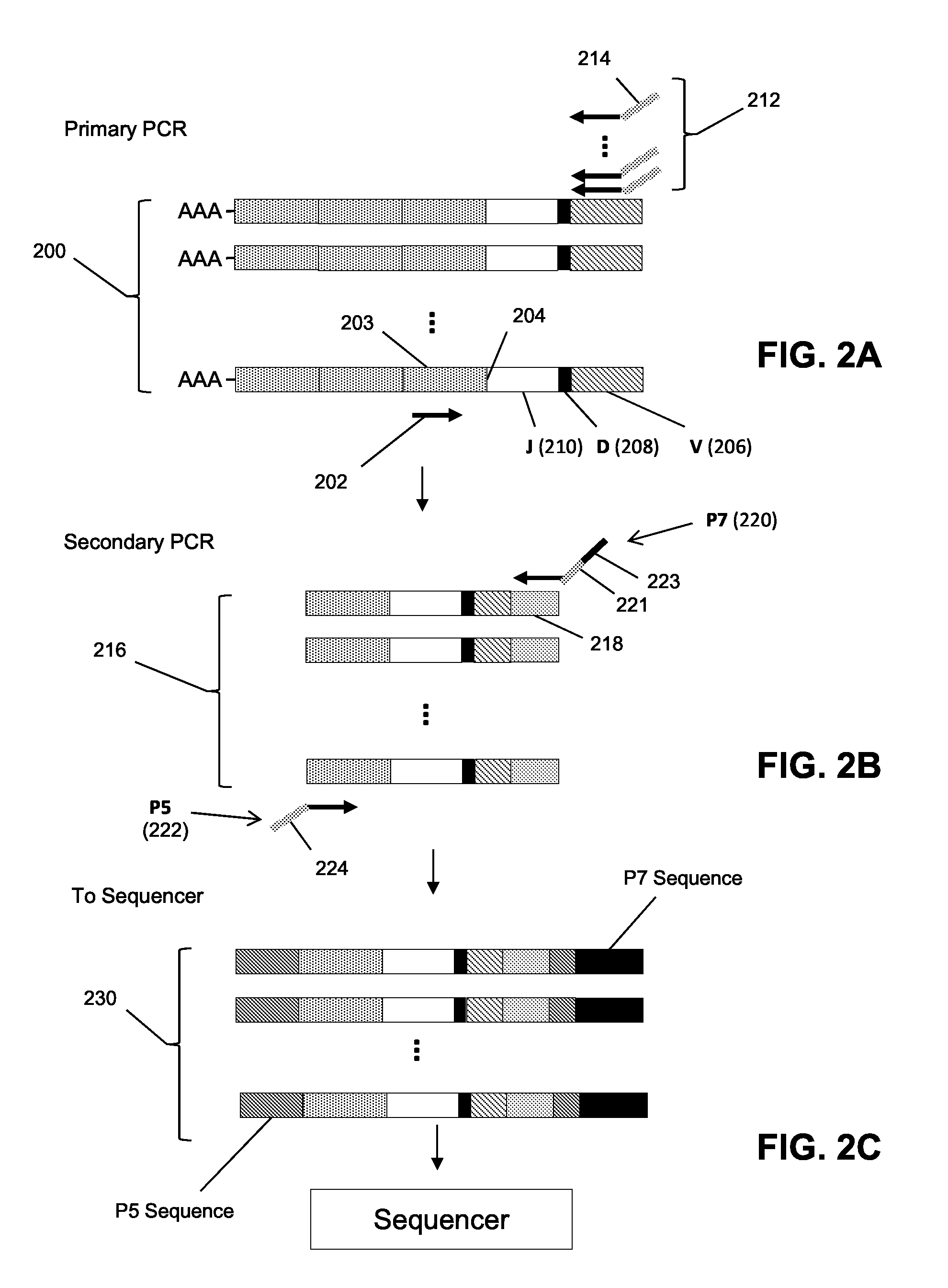Predicting patient responsiveness to immune checkpoint inhibitors
a technology of immune checkpoint inhibitors and patient response, applied in the field of predicting patient response to immune checkpoint inhibitors, can solve problems such as not being uniformly applied to all patients
- Summary
- Abstract
- Description
- Claims
- Application Information
AI Technical Summary
Benefits of technology
Problems solved by technology
Method used
Image
Examples
example
Immune Repertoire Response in Prostate and Melanoma Patients to Treatment with CTLA-4 Inhibitors
[0061]In this example, effects of CTLA-4 blockade on T cell clonotype diversity were assessed by comparing sequence-based clonotype profiles from successive samples of patient tissues. Specifically, effects were assessed on clonotype profiles from prostate and melanoma patients before and during or after treatment with CLTA-4 inhibitors. Peripheral blood mononuclear cells were obtained from patients prior to and during treatment with anti-CTLA-4 antibody. Such samples were obtained from (i) 25 patients with metastatic castration resistant prostate cancer treated with ipilimumab and GM-CSF, and (ii) 21 patients with metastatic melanoma treated with tremelimumab. Clonotype profiles of nucleic acids encoding a portion of the TCRβ chains encompassing its CDR3 region using the methodologies disclosed above (specifically, the Sequenta, Inc., LYMPHOSight™ platform). Clonotype profiles were analy...
PUM
| Property | Measurement | Unit |
|---|---|---|
| volume | aaaaa | aaaaa |
| volumes | aaaaa | aaaaa |
| volume | aaaaa | aaaaa |
Abstract
Description
Claims
Application Information
 Login to View More
Login to View More - R&D
- Intellectual Property
- Life Sciences
- Materials
- Tech Scout
- Unparalleled Data Quality
- Higher Quality Content
- 60% Fewer Hallucinations
Browse by: Latest US Patents, China's latest patents, Technical Efficacy Thesaurus, Application Domain, Technology Topic, Popular Technical Reports.
© 2025 PatSnap. All rights reserved.Legal|Privacy policy|Modern Slavery Act Transparency Statement|Sitemap|About US| Contact US: help@patsnap.com



